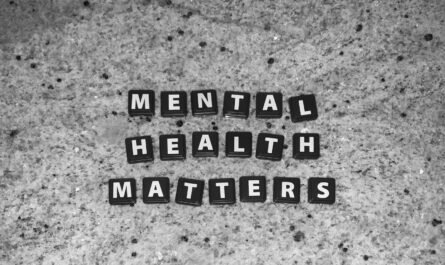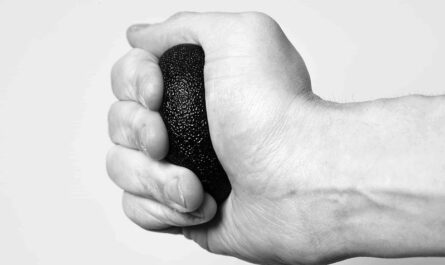A balanced lifestyle is not achieved by following fleeting trends or quick fixes; it is the result of consistent habits and mindful choices that integrate proper nutrition, regular exercise, and restorative rest. In our fast-paced modern world, where stress and distractions abound, understanding the importance of sustainable wellness is essential. This article explores practical strategies for creating a balanced lifestyle, delving into the fundamentals of nutrition, the benefits of physical activity, and the critical role of sleep and rest. Through expert insights and actionable tips, readers can develop a roadmap to long-term health and well-being.
The Foundation of Sustainable Wellness
At its core, sustainable wellness means nurturing a healthy mind, body, and spirit over the long term. It involves adopting lifestyle habits that are realistic and adaptable, rather than drastic changes that are difficult to maintain. A balanced lifestyle is built upon three pillars: nutrition, exercise, and rest. Each of these components is interconnected—what you eat affects your energy and ability to move, while quality sleep is necessary for both physical recovery and mental clarity.
A sustainable approach to wellness emphasizes gradual improvements and self-compassion. Instead of aiming for perfection, it is more beneficial to focus on consistent, small changes that collectively have a significant impact on overall health. Whether it’s swapping out sugary drinks for water, incorporating more physical activity into your daily routine, or prioritizing quality sleep, every positive choice contributes to a healthier lifestyle.
Nutrition: Fueling Your Body for Success
Proper nutrition is the cornerstone of a balanced lifestyle. It provides the energy required for daily activities, supports metabolic processes, and fosters overall health. Achieving nutritional balance involves focusing on whole, unprocessed foods, a variety of nutrients, and mindful eating practices.
Emphasize Whole Foods
Whole foods, such as fruits, vegetables, lean proteins, whole grains, nuts, and seeds, are rich in vitamins, minerals, and fiber. These foods not only nourish the body but also help regulate blood sugar levels, improve digestion, and reduce the risk of chronic diseases. A diet centered on whole foods minimizes the intake of processed items high in refined sugars, unhealthy fats, and artificial additives.
Understanding Macronutrients and Micronutrients
Macronutrients—carbohydrates, proteins, and fats—play distinct roles in the body. Carbohydrates provide energy, proteins support muscle repair and growth, and fats are vital for cell structure and hormone production. A balanced meal should include a healthy portion of each macronutrient. In addition to these, micronutrients (vitamins and minerals) are essential in small amounts for various bodily functions. Eating a colorful variety of fruits and vegetables is an effective way to ensure you receive a broad spectrum of micronutrients.
Meal Planning and Mindful Eating
Planning meals ahead of time can make healthy eating more manageable. It reduces the likelihood of impulsive decisions and ensures that nutritious options are readily available. Moreover, mindful eating—paying attention to hunger cues and savoring each bite—can lead to better digestion and improved satisfaction. Rather than rushing through meals or eating on the go, set aside time to enjoy your food and listen to your body’s signals.
Hydration
Water is an often-overlooked aspect of nutrition. Proper hydration is essential for every cellular process, from regulating body temperature to aiding digestion and flushing out toxins. Aim to drink water throughout the day, and consider carrying a reusable water bottle as a constant reminder of your hydration goals. While individual needs vary, many health experts recommend consuming eight 8-ounce glasses of water daily, often referred to as the “8×8 rule.”
Exercise: Moving Towards a Healthier You
Physical activity is a vital component of a balanced lifestyle. Regular exercise not only enhances physical fitness but also contributes to mental and emotional well-being. A sustainable exercise routine incorporates various forms of movement to keep the body engaged, reduce the risk of injury, and prevent boredom.
Finding the Right Balance of Activities
The key to a successful exercise regimen is variety. Incorporate a mix of aerobic exercise, strength training, flexibility exercises, and balance workouts. Aerobic exercises, such as walking, cycling, or swimming, improve cardiovascular health and endurance. Strength training, which can include weightlifting or body-weight exercises, builds muscle mass and strengthens bones. Flexibility exercises like yoga or stretching routines improve range of motion, while balance exercises help prevent falls and enhance coordination.
Setting Realistic Goals
Setting achievable fitness goals is essential for maintaining motivation and tracking progress. Start with small, manageable objectives—such as a daily walk, a weekly yoga class, or a short body-weight workout session—and gradually increase the intensity and duration of your activities. Celebrating these incremental successes fosters a sense of accomplishment and encourages long-term adherence to an exercise program.
Incorporating Movement into Daily Life
Not everyone has the time to hit the gym for long periods, but physical activity can be woven into daily routines. Consider taking the stairs instead of the elevator, parking further away from entrances, or taking short walking breaks during work. Even activities like gardening or dancing in your living room contribute to a more active lifestyle. The goal is to reduce sedentary time and find creative ways to keep moving throughout the day.
Mental Health and Exercise
The benefits of exercise extend beyond physical health. Regular physical activity has been linked to improved mood, reduced anxiety, and enhanced cognitive function. Exercise stimulates the release of endorphins—natural chemicals in the brain that promote feelings of happiness and well-being. Additionally, engaging in physical activities can provide opportunities for social interaction, which further boosts mental health.
Rest and Recovery: The Underrated Pillars of Wellness
While nutrition and exercise often take center stage in discussions about health, rest and recovery are equally important. Sleep is not a luxury; it is a biological necessity that allows the body and mind to repair, rejuvenate, and prepare for another day.
The Importance of Quality Sleep
Sleep is essential for cognitive function, emotional regulation, and physical recovery. During sleep, the body repairs tissues, consolidates memories, and releases hormones that regulate growth and appetite. Chronic sleep deprivation can lead to a host of health issues, including weakened immunity, impaired concentration, and increased stress levels. Prioritizing quality sleep is one of the most effective ways to enhance overall well-being.
Creating a Sleep-Friendly Environment
Establishing a conducive sleep environment can make a significant difference in sleep quality. Aim to keep your bedroom cool, dark, and quiet. Consider using blackout curtains, earplugs, or a white noise machine to create an environment that promotes restful sleep. Additionally, maintain a consistent sleep schedule by going to bed and waking up at the same time each day, even on weekends. This consistency helps regulate your body’s internal clock and improves sleep quality.
The Role of Naps and Downtime
While the focus is often on nighttime sleep, short naps during the day can also provide a quick boost in energy and focus. However, it is important to keep naps brief—typically 20 to 30 minutes—to avoid interfering with nighttime sleep. Moreover, rest is not solely about sleep; it also encompasses periods of downtime where you can relax, meditate, or simply enjoy leisure activities. Regularly scheduling time to unwind is crucial for reducing stress and maintaining mental clarity.
Managing Stress for Better Rest
Stress is one of the leading factors that can disrupt sleep. Incorporating stress management techniques—such as meditation, deep breathing exercises, or even journaling—can help quiet the mind and prepare it for restful sleep. By addressing stress proactively, you create a more supportive environment for both sleep and overall health.
Integrating the Three Pillars for a Holistic Approach
Achieving a balanced lifestyle requires integrating nutrition, exercise, and rest into a cohesive plan that fits your individual needs. The interplay between these elements is essential for sustainable wellness.
Listen to Your Body
Every individual is unique, and what works for one person may not be ideal for another. Listen to your body’s signals and adjust your routine accordingly. If you’re feeling fatigued, it might be time to focus more on rest. If you’re experiencing low energy or mood dips, consider evaluating your nutritional intake and activity levels. Self-awareness is a powerful tool in creating a balanced lifestyle.
Planning and Consistency
Sustainable wellness is built on consistency rather than perfection. Developing a weekly plan that incorporates time for meal preparation, exercise, and adequate rest can help create structure and promote long-term adherence. Consider using a planner or digital calendar to schedule your workouts, grocery shopping, and relaxation time. Consistency in your routine builds healthy habits that become part of your lifestyle.
Flexibility and Adaptability
Life is full of unexpected changes, and the ability to adapt is crucial. A balanced lifestyle is not about rigid adherence to a strict regimen; it is about flexibility and finding what works for you in different circumstances. Whether it’s modifying a workout on a busy day or preparing a simple, nutritious meal when time is short, adaptability is key to maintaining balance without feeling overwhelmed.
Mindfulness and Self-Compassion
Mindfulness is the practice of being present and fully engaged in the moment. By cultivating mindfulness, you can develop a deeper appreciation for the choices you make every day—whether it’s savoring a healthy meal, enjoying a brisk walk, or unwinding with a good night’s sleep. Self-compassion, on the other hand, involves treating yourself with kindness and understanding when things do not go as planned. Recognize that setbacks are part of the journey and use them as learning experiences rather than reasons to give up.
Practical Tips for Daily Implementation
- Start Your Day with a Nutritious Breakfast: Begin your morning with a balanced meal that includes protein, healthy fats, and complex carbohydrates. This sets the tone for steady energy levels throughout the day.
- Incorporate Movement: Whether it’s a morning jog, a mid-day stretch, or an evening yoga session, schedule physical activity that you enjoy. Even short bursts of movement can have a significant impact.
- Plan Meals in Advance: Dedicate time during the week to plan and prepare meals. Batch cooking or preparing ingredients in advance can reduce the temptation to opt for unhealthy convenience foods.
- Establish a Relaxation Routine: Develop an evening routine that helps signal to your body that it is time to wind down. This could include reading, meditating, or a warm bath before bed.
- Hydrate Throughout the Day: Keep a water bottle handy to remind yourself to drink regularly. Infuse your water with fruits or herbs for added flavor and benefits.
- Schedule Downtime: Set aside time each day—no matter how brief—to relax and decompress. This could be as simple as a five-minute mindfulness break or a short walk outside.
- Track Your Progress: Use a journal or a wellness app to record your meals, workouts, and sleep patterns. Tracking your progress helps identify trends, celebrate achievements, and adjust your routine as needed.
- Set Realistic Goals: Instead of aiming for drastic changes overnight, set achievable goals and gradually build upon them. Recognize that sustainable wellness is a marathon, not a sprint.
The Benefits of a Balanced Lifestyle
Adopting a balanced lifestyle offers myriad benefits that extend far beyond physical health. Improved nutrition supports cognitive function and emotional stability, while regular exercise reduces the risk of chronic diseases and enhances mood through the release of endorphins. Adequate rest and sleep enable the body to recover, promote mental clarity, and strengthen the immune system. Together, these elements foster resilience against stress, boost overall energy levels, and improve quality of life.
A well-rounded approach to wellness can also lead to better social interactions and enhanced productivity. When your body is well-nourished, your mind is sharp, and you are well-rested, you are more likely to engage positively with others and perform at your best in your personal and professional life. Moreover, sustainable wellness habits can set a positive example for those around you, encouraging family members, friends, and colleagues to embrace healthier lifestyles.
Long-Term Strategies for Sustainable Wellness
Maintaining a balanced lifestyle over the long term requires commitment, perseverance, and a willingness to evolve with changing circumstances. Here are some long-term strategies to ensure that your wellness journey remains sustainable:
- Regular Self-Assessment: Periodically evaluate your routines and habits. Consider what is working well and what might need adjustment as your circumstances, interests, or goals change.
- Education and Adaptation: Stay informed about new research and trends in nutrition, exercise, and sleep. As our understanding of health evolves, so too should your approach to wellness.
- Build a Support Network: Surround yourself with individuals who share your commitment to health. Whether it’s a workout buddy, a nutrition coach, or an online community, a strong support network can provide motivation and accountability.
- Celebrate Milestones: Recognize and celebrate your achievements, no matter how small. Positive reinforcement reinforces healthy behaviors and builds confidence.
- Prioritize Mental Health: Remember that mental well-being is just as important as physical health. Integrate activities that promote relaxation and mindfulness into your routine, and seek professional help if needed.
By taking these steps and integrating them into your daily life, you can create a balanced lifestyle that supports sustainable wellness. The journey toward health is ongoing, but every small, positive change contributes to a richer, more fulfilling life.
Conclusion
Creating a balanced lifestyle with nutrition, exercise, and rest is a multifaceted endeavor that requires intentional choices and continuous effort. By focusing on whole foods, incorporating regular physical activity, and prioritizing quality sleep and relaxation, you set the foundation for sustainable wellness. Embrace gradual change, listen to your body, and approach your health with both discipline and self-compassion.
In a world that often prioritizes immediate results and rapid fixes, adopting a holistic, long-term strategy for well-being is both refreshing and essential. The benefits of a balanced lifestyle extend to all aspects of life—enhancing physical health, improving mental clarity, and fostering meaningful relationships. With the right mindset and a commitment to self-care, you can build a life where nutrition, exercise, and rest work in harmony to support your overall well-being.
Remember, sustainable wellness is not about perfection. It is about progress, balance, and the understanding that every healthy choice is a step toward a more vibrant and resilient future.



